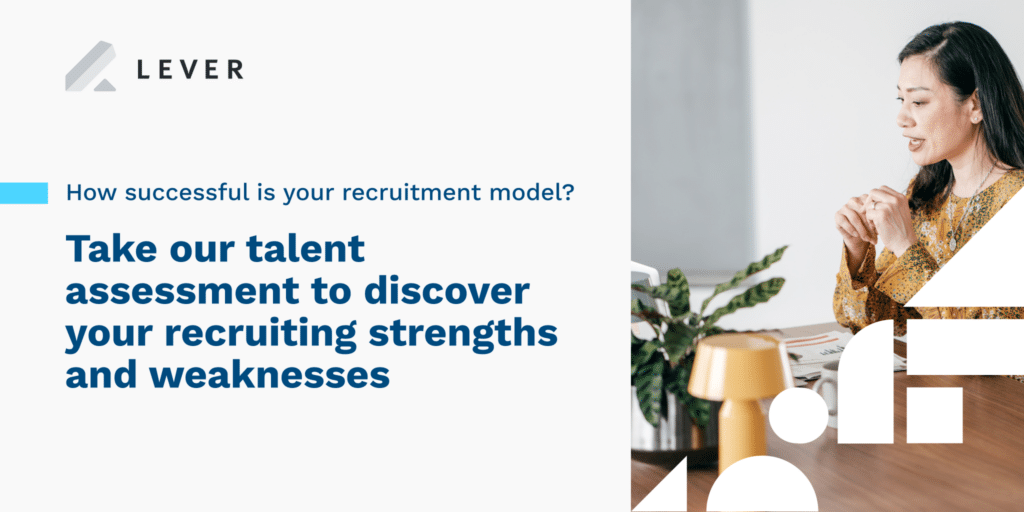Interviews are a necessary part of your hiring process, and yet, determining whether a candidate is right for a role can be challenging. Can a one-hour interview truly tell you everything you need to know before hiring a new team member?
For this reason alone, many recruiting teams involve more than just a hiring manager or talent acquisition leader in the interview process. For example, when hiring for a customer success role, you’ll likely include a Senior Customer Success Manager and Customer Success Technician in interviews so they can ask pertinent questions and get to know candidates.
Which questions will these team members ask, and how will they assess whether a candidate is the right fit? Ensuring everyone involved in the hiring process is aligned is critical to running successful, fruitful interviews, and yet, many teams struggle with keeping interviews aligned with hiring goals and objectives.
This is where structured interviews come in. They can help improve and streamline your hiring process while eliminating bias in your interviews. Let’s dive in!
What is a structured interview?
A structured interview (also referred to as a ‘structured job interview’) is a method of assessment that measures how competent a candidate is for a role by asking all candidates the same set of questions and comparing them against the same criteria.
Structured interviews require a hiring team to develop a clearly defined purpose for each interview, along with a specific set of questions for each interviewer to ask. This includes a rubric or scorecard of some kind that helps interviewers assess answers to each question. This means:
- All candidates are asked the same predetermined questions, in the same order
- All candidates’ responses are evaluated using the same criteria or scale
Why are structured interviews better?
Conducting job interviews can seem pretty straightforward.
Candidates come into your talent pipeline for an open role, you choose the ones you’d like to interview, and you ask them a series of questions. Based on their responses and your experience, you move forward with the candidate you think best fits the role.
Upon second glance, however, you’ll find that a brief interview and a ‘gut feeling’ aren’t enough to make the most effective hiring decisions—especially when other stakeholders or influencers are involved.
Structured interviews help you hire the right candidate
Hiring the wrong candidate can be costly. Studies have shown that, on average, a bad hire can cost a company upwards of $15,000. Meanwhile, 74% of managers say they’ve hired the wrong person for a position at one time or another.
To help you choose the right candidates, a structured interview process is key. According to research, structured interviews are twice as effective at predicting job performance as unstructured ones and can help eliminate or reduce confirmation bias in your hiring.
The advantages to using structured interviews
Many recruiters consider structured interviews to be more effective, as they’re based on a clearly defined role and its core objectives—a hiring team uses a rubric and deliberate set of questions that foster data-driven hiring decisions.
Let’s take a look at the key advantages of using structured interviews.
- Better predict job performance — as we mentioned above, studies have shown that structured interviews can help you better predict a candidate’s job performance
- Eliminate confirmation bias — all candidates are asked the same questions and are assessed using the same rubric, helping ensure your hiring is equitable while decreasing the risk of confirmation bias
- Data-driven vs emotional hiring — as candidates are assessed based on standardized criteria rather than ‘gut instinct’ or feeling, hiring teams can make more data-driven hiring decisions
- Optimize interview time — having a structured interview framework in place can help managers and stakeholders optimize the time they have with each candidate
Benefits of leveraging structured interviews for candidates and employers
The intention behind structured interviews is to help recruiters and hiring teams make objective hiring decisions, which ultimately benefits both the candidate who gets hired and the organization.
Structured interviews benefit candidates in a few key ways:
- Candidates are assessed based on skills and qualities as they relate to the core objectives of the role (versus personal preference)
- All candidates are asked the same questions and assessed using the same criteria, making the hiring process more intentional and fair
- Interviews are more deliberate and outcome-oriented, which maximizes the time a candidate has with a hiring manager
Structured interviews benefit employers as they:
- Help to reduce unconscious bias and/or confirmation bias in interviews
- Create a more deliberate, intentional, and standardized process for interviews that helps hiring teams choose the right candidates
- Allows hiring teams to leverage their time with candidates more productively by asking the right questions
The 3 types of interviews recruiters leverage
Today, job interviews are conducted in a number of different ways and can include multiple steps and touchpoints. Think about virtual, in-person, and telephone interviews—along with one-on-one, panel, or group interviews. Whichever format you choose, a job interview can be structured in one of three ways:
- Unstructured
- Semi-structured
- Structured
What are the core differences between these three interview types, and why or when should you leverage each? We’ll start with structured vs unstructured interviews.
Structured vs unstructured interviews
In a structured interview, the interviewer asks a specific series of predetermined questions. These questions are planned in advance so that each candidate is asked the same set of questions in the same order.
You may also see or hear structured interviews referred to as ‘planned interviews’ or ‘formalized interviews’ but the objective is the same: setting a standardized process for interviewing candidates.
Structured interviews are your safest bet when conducting more equitable and inclusive interviews, as you’re required to stick to a prescribed process that assesses candidates fairly, not subjectively.
In an unstructured interview, an interviewer leads the discussion and asks questions without any preparation. So, questions are not predetermined and there is no path or process put in place beforehand. In other words, the interviewer flies by the seat of their pants!
Otherwise known as informal interviews or a non-directive interview, unstructured interviews have recruiters or hiring managers asking random sets or types of questions—this means each candidate is asked different questions and may be given different scenarios to respond to (and there is no set order or prescribed rubric).
Structured vs semi-structured interviews
We’ve gone over structured and unstructured interviews; now, we need to answer the question, “what are semi-structured interviews?”
Think of semi-structured interviews as a hybrid interview; the interviewer doesn’t ask a formalized set of questions but instead sticks to a brief list of predetermined talking points while letting the rest of the conversation flow naturally. For example, they could ask the candidate more open-ended questions or allow the candidate to ‘lead’ the interview by speaking about their experiences and working style or asking the interviewer about the company culture.
While you’ll still want to stick to the same basic structure for each candidate’s interview process, there are some cases where it makes sense to deviate a little more by using a semi-structured interview:
- You’re courting a very passive candidate. Some candidates are very passive and won’t be ready to enter into your recruitment process right away. In this case, you may need to add an extra introductory phone call or coffee meeting (or several of each) to warm the candidate up to the idea of making a move.
- You’re about to lose a top-choice candidate. Opposite of the passive candidate is the candidate who is in very high demand and is bordering on accepting an offer elsewhere. There will be times when you’ll need to speed up your recruitment process to make quick decisions for top-choice candidates before they’re no longer available.
- Informal gatherings are part of your process. When an informal gathering is part of your interview process, it does not (and should not) need to be structured. This is an opportunity for your employees and candidates to get to know one another in a more relaxed environment. Let the conversation happen organically, much like it would over a normal team lunch or outing.
- Your questions are published. When some candidates can prepare their responses and others can’t, they are no longer on a level playing field. Review Glassdoor regularly to see if your behavioral interview questions and work sample tests have been published. If they have, consider whether you should change them for the remainder of your candidates.
Why you should use a structured interview framework
If structured interviews are more effective, why don’t all hiring teams use them when recruiting and nurturing candidates? Well, it could have a lot to do with comfort.
Research has shown that, in general, interviewers tend to think they’re great at interviewing, so few will update their skills or practice new ways of conducting interviews. But interviewing can quickly become an informal, almost casual process if you’re tasked with interviewing candidates often or at scale. This can lead to ineffective interviews that hinder hiring teams from properly assessing candidates—and can lead to the ‘interview effect.’
In short, the ‘interview effect’ occurs when an interviewer unintentionally influences the interviewee. For example, an interviewer’s body language and responses can influence how a candidate answers questions. Given interviews are social interactions, a casual or unstructured approach can bias people’s responses or behaviors in an interview.
In this sense, having a structured interview framework in place enables your hiring team to conduct more effective, unbiased interviews. There are benefits for both organizations and candidates.
How successful is your recruitment model, really?
Today’s modern recruiter has a lot to juggle before you can even hire the right candidates, let alone source them. Successfully sourcing, engaging, and hiring talent to grow your organization must start with your recruitment model—how effective is yours? Take our brief assessment to find out how you can take your talent acquisition strategy to new heights.





